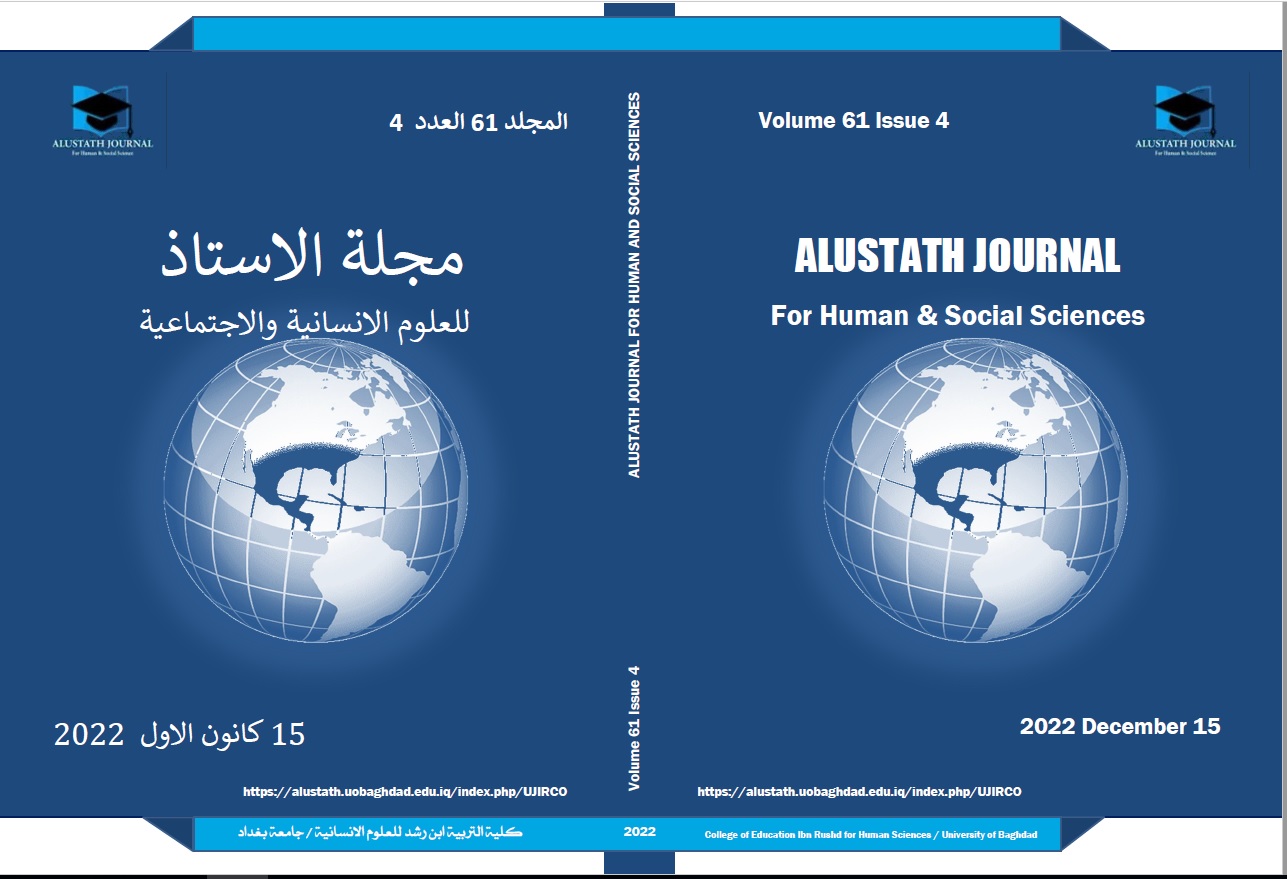Testing the Ability of EFL Postgraduate Certificate Teachers to Identify Vocabulary Idiomatic Meaning in Nineveh Schools
DOI:
https://doi.org/10.36473/ujhss.v61i4.1701Keywords:
idiomatic meaning, EFL teachers, , post graduate certificateAbstract
Given the importance of the idiomatic meaning of expressions, especially for EFL teachers who have the responsibility of writing research, so the present study aims at testing the ability of (40) of EFL teachers in Nineveh schools who have post-graduate certificates and work in schools, to identify two types of the idiomatic meaning in some sentences. The researcher prepared a test consisting of (40) items; each item consisted of four options, one is correct. Two types of idioms are included in the test which is divided equally: idioms of encoding and idioms of decoding. After confirming the validity and reliability of the test, the study concluded that EFL teachers with postgraduate certificates showed a high ability to discern idiomatic meaning. For the variable of gender, male EFL teachers showed greater ability than females in terms of idiomatic meaning. For the variable of years of work, EFL teachers with 15 or fewer years of service showed greater ability to discern idiomatic meaning and for both types: encoding and decoding than those with over 15years of service.
Downloads
References
• American Heritage Dictionary of the English Languages(2000),4th ed. Boston: Houghton Mifflin.
• Baker, M.(1992).In Other Works: A Course Book on Translation. London: Routledge, Print.
• Ball, W.J(1968).A Practical Guide to Colloquial Idiom. London: Longman Group Ltd.
• Binza, H. and Bosch, S., Language Science and Language Technology in Africa: Festschrift for Justus C. Roux, African Sun Media,(2012),p.8,11,15.
• Cruse, D.(1986).Lexical Semantics. Cambridge: Univ. Press.
• Crystal, D.(2003) A Dictionary of Phonetics and Linguistics. Cambridge: Cambridge University Press.
• Fernando and Flavell(1981).Critical View on Idiom. Exetert: University of Exeter.
• Fernando, C.(1996).Idioms and Idiomacity. London: Penguin books.
• Levinson, S.(1983).Pragmatics. Cambridge: Cambridge University Press.
• Longman Idioms Dictionary (1998).Essex: Addison Wesley Longman.
• Mc Carthy,M. and O’dell,F.(2010).English Idioms Advanced in Use:60 Units of Vocabulary and Practice Self Study and Classroom Use. Cambridge University Press.
• Mathews, P.H. Concise Dictionary of Linguistics.(2007).2nd ed .Oxford University Press.
• Mohammad, M.M.(2014).Difficulties Facing Advanced Iraq EFL Learners in Translating English Idioms into Arabic. Orook Journal for Human Sciences.Vol.7,No.2,p.18.Available at: https://www.iaij.net/iasj?func=issueTOC&isld=5789&uiLanguage=ar
• Newmark,P.(1988).A Textbook of Translation. London: Prentice Hall.
• Philip,G.(2011).Colouring Meaning: Collocation and Connotation in Figurative Language.John Benjamins, p,15.
• Seidl, J.& McMordie, W.(1988):English Idioms. Oxford: Oxford University Press.
• Simpon, P.(2004):Stylistics :A Resource Book for Students. New York: New York: Routledge.
• Thomas, J.(1995).Meaning in Interaction .London: Longman.












